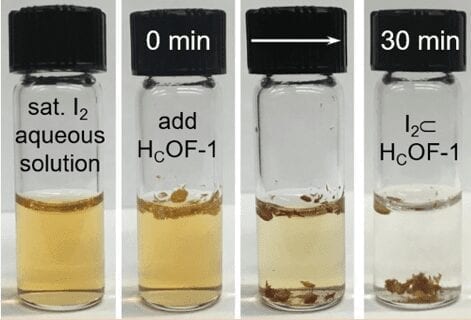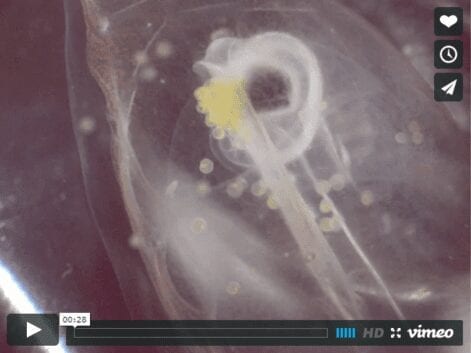
Tiny single-cell organisms discovered living underground could help with the problem of nuclear waste disposal, say researchers involved in a study at The University of Manchester.
Although bacteria with waste-eating properties have been discovered in relatively pristine soils before, this is the first time that microbes that can survive in the very harsh conditions expected in radioactive waste disposal sites have been found. The findings are published in the ISME (Multidisciplinary Journal of Microbial Ecology) journal.
The disposal of our nuclear waste is very challenging, with very large volumes destined for burial deep underground. The largest volume of radioactive waste, termed ‘intermediate level’ and comprising of 364,000m3 (enough to fill four Albert Halls), will be encased in concrete prior to disposal into underground vaults. When ground waters eventually reach these waste materials, they will react with the cement and become highly alkaline. This change drives a series of chemical reactions, triggering the breakdown of the various ‘cellulose’ based materials that are present in these complex wastes.
One such product linked to these activities, isosaccharinic acid (ISA), causes much concern as it can react with a wide range of radionuclides – unstable and toxic elements that are formed during the production of nuclear power and make up the radioactive component of nuclear waste. If the ISA binds to radionuclides, such as uranium, then the radionuclides will become far more soluble and more likely to flow out of the underground vaults to surface environments, where they could enter drinking water or the food chain. However, the researchers’ new findings indicate that microorganisms may prevent this becoming a problem.
Working on soil samples from a highly alkaline industrial site in the Peak District, which is not radioactive but does suffer from severe contamination with highly alkaline lime kiln wastes, they discovered specialist “extremophile” bacteria that thrive under the alkaline conditions expected in cement-based radioactive waste. The organisms are not only superbly adapted to live in the highly alkaline lime wastes, but they can use the ISA as a source of food and energy under conditions that mimic those expected in and around intermediate level radwaste disposal sites. For example, when there is no oxygen (a likely scenario in underground disposal vaults) to help these bacteria “breath” and break down the ISA, these simple single-cell microorganisms are able to switch their metabolism to breath using other chemicals in the water, such as nitrate or iron.
The fascinating biological processes that they use to support life under such extreme conditions are being studied by the Manchester group, as well as the stabilizing effects of these humble bacteria on radioactive waste. The ultimate aim of this work is to improve our understanding of the safe disposal of radioactive waste underground by studying the unusual diet of these hazardous waste eating microbes.
The Latest on: Hazardous waste-eating bacteria
[google_news title=”” keyword=”Hazardous waste-eating bacteria” num_posts=”10″ blurb_length=”0″ show_thumb=”left”]
via Google News
The Latest on: Hazardous waste-eating bacteria
- Methane Eating Microbes - A Novel Solution For Greenhouse Gas Mitigationon April 25, 2024 at 7:00 am
Methane is a significant contributor to human-driven greenhouse gas emissions, but there is useful group of microbes that can help because they use methane for food.
- This Harvard spinoff uses plastic-eating microbes to clean up wasteon April 22, 2024 at 1:00 am
There are 5 billion tons of plastic sitting in landfills and in nature. Startup Breaking is working on a new way to clean it up with biology.
- Why Is Solving The Plastic Problem So Hard?on April 18, 2024 at 9:07 pm
But there’s still no good way to scale up the removal of plastic that already exists. Waste-eating bacteria and enzymes have been shown to work in lab settings, but the scale-up process has a long ...
- Hazardous Waste Newson April 15, 2024 at 5:00 pm
Apr. 16, 2024 — Scientists have found a way to transform metal waste into a highly efficient catalyst to make hydrogen from water, a discovery that could make ... Apr. 9, 2024 — Scientists are ...
- Recycling and Waste Newson April 14, 2024 at 5:00 pm
Trash to Treasure -- Researchers Turn Metal Waste Into Catalyst for Hydrogen Apr. 16, 2024 — Scientists have found a way to transform metal waste into a highly efficient catalyst to make ...
- Hazardous Waste Managementon April 11, 2024 at 4:38 pm
William & Mary generates hazardous and non-hazardous waste from maintenance, laboratory and studio activities. As a registered small quantity generator, all chemical waste generated in University ...
- Flesh-Eating Bacteriaon April 11, 2024 at 4:27 pm
MICHAEL SMITH: Flesh eating, bacteria in the Gulf of Mexico? Well, it's technically not flesh, eating, and thankfully, rare. But it's still a scary story. The bacteria vibrio, vulnificus can kill ...
- This SoCal hazardous waste facility could get a new permit despite past violationson April 8, 2024 at 5:00 pm
California regulators could soon grant a fresh permit for a hazardous waste treatment facility in Santa Fe Springs, even as they face off with the same company in court over alleged violations.
- What Is Medical Waste?on April 5, 2024 at 5:00 pm
Made of heavy-duty plastic Able to close with a tight-fitting lid that can’t be punctured Upright and stable when you use it Leak-resistant Labeled to warn that there’s hazardous waste inside ...
- Finland is on the verge of an incredible human-made alteration deep beneath the Earth: 'They'll hold a total of 5,500 tonnes of waste'on April 1, 2024 at 8:19 am
This waste can stay hazardous for thousands of years ... nicknamed "the Octopus," and the discovery of waste-eating bacteria, are game-changers. They offer potential solutions for capturing ...
via Bing News










